Date: April 1670
Location: countryside near London, England
Summary: An English woman named Jane Lead has her first contact with a bright cloud with a brilliant woman inside. Jane Lead was a British Christian mystic who lived from 1623 to 1704. Information about her early life is sparse but her family is known to have hailed from Norfolk. Born as Jane Ward in 1623, she married William Lead (or Leade) at the age of 21, and had four daughters by him. According to her own writings, during a dance at a Christmas party, when she was 15 years old, Lead heard a miraculous disembodied voice. It said “Cease from this, I have another dance to lead thee in, for this is vanity.” She interpreted this as a sign that she should devote her life to a spiritual cause, and in later life this decision led her into the study of theology, philosophy and alchemy. In April 1670, as Lead reflected about the nature of Wisdom, There came upon me an overshadowing bright Cloud, and in the midst of it the Figure of a Woman, most richly adorned with transparent Gold, her hair hanging down and her Face as the terrible Crystal for brightness, but her Countenance was sweet and mild. At which sight I was somewhat amazed… From this moment on, Jane Lead’s life would be full of visions. Years later she would write about actual sightings that she had and several abductions by a group of beings who, by her own admission, were neither angels nor demons. (As noted by Jesse Glass in an article on Jane Lead’s mystic experiences, she often uses the term ‘Magia’ when referring to them). She calls her abduction experiences Transports throughout her diaries.
Source: Works of Jane Lead, especially her book A Fountain of Gardens. “Printed and Sold by J. Bradford, near Crowder’s Wall,” London 1696. Four Volumes. The original edition is very rare but most of Jane Lead’s works can be found faithfully reproduced in on-line archives.
 Date: August 18, 1671
Date: August 18, 1671
Location: Regensburg, Germany
Summary: Signs in the sky: An engraving shows an amazed crowd staring at ships in the sky, various mythical animals and armies arrayed for battle. This engraving is cut from a book, The Relationis historicae semestralis vernalis continuatio (1672 edition) by Jacobus Francus and Sigismundus Latomus.
Source: Wunderzeichen, zu Regenspurg gesehen am 18. Augusti 1671. [Goethe Universitatsbibliothek Frankfurt-am-Main, Einblattdr. G.Fr. 12], engraving cut from Francus, Jacobus & Latomus, Sigismundus. Relationis historicae semestralis vernalis continuatio (1672). University of Frankfurt, Collection of Gustav Freytag (Einblattdr. G.Fr. 12).
Date: January 25, 1672
Location: Paris Observatory, France
Summary: The great astronomer and planetary observer Giovanni Domenico Cassini, who was director of Paris Observatory at the time, recorded the presence of an object that seemed to be a satellite of Venus. He would not announce this discovery until he saw the object again, in 1686. This supposed satellite was later named “Neith.”
Source: “The Problematical Satellite of Venus,” in The Observatory 1 (1884): 222-226.
Date: February 8, 1672
Location: off Cherbourg, France
Summary: Captain Isaac Guiton reports that a “star” came down; it split into two “ships”, while a third one appeared later. The original reads: “An hour past midday, by the calmest weather in the world, appeared to us a star over our heads, about fifteen feet long. From there it went and fell to the north, leaving some smoke that formed into two ships, each with two lights and the mizzen and their large sails folded, both sailing into the south. The one on the north side was larger than the southernmost one. And as they sailed thus, they separated by about four feet, and another ship formed in the middle, seemingly bigger than the others, all black, and turning its bow to the north without any sails, yet equipped with its masts and ropes, as if resting at anchor. This seemed to us to take over half an hour. After which, they vanished to the south without leaving any trace…”
Source: Cited by Michel Bougard in La chronique des OVNI {1977), 96.
Date: November 8 or 16, 1672
Location: Tokyo, Japan
Summary: An object resembling a lantern flew away to the east.
Source: Takao Ikeda, UFOs over Japan
Date: 1674
Location: Japan
Summary: A dark, elongated cloud flies “like an arrow,” on a N to SE trajectory. By definition, meteors are luminous, often described as “fiery.” The description given here, of a dark object, seems to exclude the meteoritic explanation.
Source: Brothers Magazine , 1
Date: 1676: Edmund Halley sees UFO
Date: May 23, 1676
Location: London, England
Summary: In a diary entry, spiritual writer Jane Lead describes a visit from three mysterious figures. “I saw one as in a Figure of a sprightly Youth, presenting himself near my Bedside, which amazed me, and I was afraid to take knowledge of him, who made out to me, as if he would draw my Aspect to him, but I could not find any Power for Speech with him. This disappearing, another in taller Stature, and more Manly Countenance, drew upon me, seeming to desire Familiarity with me; and then I looked when this Appearance would have spoke, but it was passive, and silent, only pleasant in its Countenance, who on a sudden withdrew. Then again was a presentation of a Person in a middle Stature, comely, sweet, and amiable for attraction; yet I being bounded in my Spirit, was hindered: otherwise I could have run with my Spirit into him.” While this apparition could be interpreted as an effect of schizophrenia this report 167 would be seen as classic “bedroom visitation” by aliens in the context of today’s abduction literature.
Source: The Works of Jane Lead, op. cit.
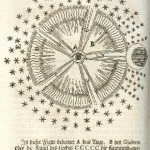 Date: July 16, 1676
Date: July 16, 1676
Location: London, England
Summary: Spiritual writer Jane Lead witnessed an object in the sky that she took to be “the eye of God.” She wrote “This Morning…there appeared to me an Azure blue Firmament, so Oriental as nothing of this, in this Visible Orb could parallel with it. Out of the midst thereof was a most wonderful Eye, which I saw Sparkling, as with Flaming Streams from it. Which I am not able to Figure out, after that manner, in which it did present it self unto me. But according to this Form it was, as much as I am able to give an account of it, it was thus, or after this manner. There was a Flaming Eye in the midst of a Circle, and round about it a Rainbow with all variety of Colours, and beyond the Rainbow in the Firmament, innumerable Stars all attending this Flaming Eye.” Jane’s style is as difficult and archaic as that of any 17th century mystic, but what she seems to be describing is a luminous or fiery (“sparkling…flaming”) lenticular (“eyes shaped”) object that flew over London on a sunny day (“the blue firmament”). The object emitted rays or jets (“flaming streams”) and seemed to move within a wider rainbow colored circle, perhaps accompanied by smaller objects which looked like stars. Her drawing shows an oval or eye-like thing emitting five shafts of flame or light, enclosed by a thick circle surrounded by stars. The circle’s interior is labeled “The Globe of Light,” suggesting something more substantial than a mere ‘ring’ or ‘rainbow.’
Source: The Works of Jane Lead, op. cit.
Date: September 20, 1676
Location: Uffington Fields, England
Summary: A fiery ‘meteor’ in the shape of a dart moved with a wavy vibrating motion. At 7 P.M., according to Morton, an “unusual meteor” was seen by residents of Northamptonshire. Mr. Gibbon of Peterborough said that
“The stem at a distance appear’d about a foot and half in length and with a narrow stream of light as if were a String of Cord affix’d to it. It had a waved or vibrated motion Its duration about a minute.” Mr. Gibbon allegedly first saw this apparition at the zenith as it made its way toward Uffington Fields.
Source: John Morton, The Natural History of Northamptonshire; with some account of the antiquities (London, 1712), 348
Date: March 22, 1677
Location: London, England
Summary: Spiritual writer Jane Lead wrote that during the night she had been “cast as into a magical Sleep, where I saw my self carried into a Wilderness.” There she found herself in a peaceful, natural environment. Before she could enjoy these circumstances, however, a being that she had seen before and two other female entities “did make a kind of Assault upon me; but one of the Females was more fierce, and did give my outward Skin a prick, as with a sharp Needle. Upon which I called for Angelical aid to succour me, or else too hard they would be. Whereupon I was parted from them, and saw them in that place no more…” Lead writes that after this vision, before waking up in bed, she was told that she needn’t worry, that it would not happen to her again.
Source: The Works of Jane Lead, op. cit.
Date: December 30, 1677
Location: at sea West of Granada, Spain
Summary: Pierre Boutard, an officer aboard the ship La Maligne notes in the logbook that “on Thursday the thirtieth day of December 1677 in the morning about 4 hours, we have seen a star in the direction of northwest lA west, ending southeast lA east, but carrying (such) a great light that all on board thought there was widespread fire, but it was accompanied by over 200 rays carrying such a light, that we believed we were all lost. We dropped anchor about 9 or 10 in the morning in the small bay of Grenada.”
Source: Michel Bougard, La chronique des OVNI( 1977), 97.
Date: February 9, 1678
Location: London, England
Summary: In a diary entry entitled A Transport, Jane Lead writes: “In the Morning after I was awaked from Sleep, upon a sudden I was insensible of any sensibility as relating to a corporeal Being, and found my self as without the clog of an Earthly Body, being very sprightly and airy in a silent place, where some were beside my self, but I did not know them by their Figures, except one, who went out, and came in again: and there was no speaking one to another, but all did set in great silence.” Lead’s ordeals could not be closer to the situation of a modern abductee: She is woken up in a disoriented trance-like state, possibly confusing reality with a dream or a recent half-forgotten memory; around her are ‘figures’ she does not know, except for one; there is an eerie silence; next, Lead recalled seeing a gold-colored craft “come down” to “a pretty distance” from where she was. “It was in the form of a large Ship” with four golden wings. The ship “came down with the greatest swiftness as is imaginable.” She asked some of the figures beside her if they could see what she could, and mysteriously they said they couldn’t! No doubt puzzled by their answer, Jane looked again and saw herself m front of the others, “leaping and dancing and greatly rejoicing to meet it.” Bar the detail about a third-person view of herself when the ship landed, this is the kind of account given by people whose cases fill countless UFO books today, and whose stories are often taken at face value. It is not sufficient to accuse abductees of confabulation and of sharing science-fiction fantasies because the same ‘fantasies’ have been reported and believed for hundreds of years, since long before the popularization of the genre. Was Lead’s vision a muddled memory of an earlier experience? Lead’s diary entry of February 9th concludes: “But when I came up to it [the Ship], then it did as suddenly go up again, withdrawing out of sight, unto the high Orb from whence it came. After which I found my self in my Body of sense, as knowing I had been ranging in my Spirit from it for a while, that I might behold this great thing.”
Source: The Works of Jane Lead, op.cit.
Date: September 17 1680
Location: Lisbon, Portugal
Time: 1130 A
Summary: Numerous witnesses heard a loud report coming from the sky and saw three tongues of flames shooting down into the fields. This occurred three times in a row. A powerful lighting struck parts of the city causing some fires. Around the same time on the nearby fields a large black cloud-like mass descended towards the ground emitting a loud thunder like sound. From the cloud emerged a huge hair covered figure that ran swiftly across the fields. Several locals attempted to chase the creature but this one was to fast. It ran so quickly that it was able to run circles around the stunned locals. It was able to seemingly appear behind them and then in front of them in a matter of seconds. Those who were able to see it close described it as having a huge multi-colored tail, white, blue, and red. Soon after the appearance of this terrible beast a powerful storm destroyed many farms and houses in the area killing over 80 persons.
Source: Chris Aubeck, Return to Magonia, quoting Don Julio Alberto de la Hinojosa
Date: November 17, 1684
Location: Saint Aubin, Brittany, France
Time: 10 A.M.
Summary: About 10 A.M. a priest from Lannion saw “a flame in the shape of a teardrop, as big as one’s hand, coming down from the sky. Its motion was extremely slow, for it took no less than seven to eight minutes to reach the horizon. It seemed a bit bluer. Its tail threw off sparks, and it was on the opposite side from the sun.”
Source: Histoire de l’Academie Royale des Sciences (1684), 419.
Date: July 9, 1686
Location: Leipzig, Germany
Time: 1:20 A.M.
Summary: About 1:20 A.M. a brilliant object, half the apparent size of the Moon, was observed hovering for a full 15 minutes. The observer was “the late Mr. Gottfried Kirch, for many years a diligent observer of the heavens, perfectly well instructed in astronomical matters,” according to Rev. Edward Polehamton, who notes: “A fire ball with a tail was observed, in 8 V2 quarter degrees of Aquarius and 4 degrees north, which continued immoveable for half a quarter of an hour, having a diameter equal to half the moon’s diameter. At first, the light was so great that we could see to read by it; after which, it gradually vanished in its place. This phenomenon was observed at the same time in several other places; especially at Schmitz a, a town distant from Dantzig eleven German miles, towards the south, its altitude being about 6 degrees above the southern horizon…. Whence, by easy calculus, it will be found, that the same was not less than sixteen German miles distant in a right line from Leipsic, and above 6 V2 such miles perpendicular above the horizon, that is at least thirty English miles high in the air. And though the observer says of it, immotus perstititper semi-quadrant em horae, it is not to be understood that it keeps its place like a fixed star, all the time of its appearance; but that it had no very remarkable progressive motion. For he himself has, at the end of the said Ephemerides, given a figure of it, whence it appears that it darted obliquely to the right-hand, and where it ended, left two globules or nodes, not visible but by an optic tube.”
Source: Gotfried Kirch, Ephemerides (contained as an appendix to the ephemeride for the year 1688). Quoted by E. Polehamton in The Gallery of Nature and Art, or a Tour through Creation and Science (1815).
Date: August 28, 1686
Location: Paris Observatory, France
Summary: A second observation by Cassini of the supposed satellite of Venus, which would later be named “Neith.” Venus was a morning “star” at the time, with heliocentric longitude 59° and elongation 38°. The object was estimated to be 1/2 the diameter of Venus and it showed the same phase as Venus. Cassini then revealed his two sightings.
Source: “The Problematical Satellite of Venus,” in The Observatory 7 (1884): 222-226.
Date: June 1688
Location: Yunnan Province, China
Summary: A large yellow “umbrella-like” object rose from the ridge and came down again, with many lights: “In the year 27 under the reign of emperor Kangxi of the Qing dynasty, my brother in-law Bixilin went to his home in the mountains, 20 kilometers from the city of Kunmin. While staying there, he saw every day at noon, when the weather was clear, a large yellow cover like an umbrella that rose slowly above a ridge. This object threw such brilliant lights that he dared not look at it directly. It rose and got lost into the clouds. A little while later it would come down, always slowly, going up and down in the same way. At nightfall, the flying object lost its yellow color and turned paler and blurry. It disappeared completely when the sky was dark.”
Source: Shi Bo, La Chine et les Extraterrestres, op.cit., 36.
Date: December 20, 1689
Location: England, exact location unknown
Summary: About 4:45 A.M., a fiery object shaped like a half-moon changed into a bright sword and “ran westward.” .
Source: “Diary of Jacob Bee of Durham,” reprinted in Six North Country Diaries, vol. CXVIII, J.C. Hodgson, ed. (Durham: Surtees Society, 1910).
Date: May 6,1692
Location: Edo (Tokyo), Japan
Summary: In broad daylight, three luminous objects like the sun, moon and a star appeared, sparkling “in an unearthly way.”
Source: Inforespace 25.
Date: Summer 1692
Location: Cape Ann, Massachusetts
Time: night
Summary: Ebenezer Babson was returning home late one night when he saw two men step out of his house and dash into a cornfield. When he ran inside to check on his family’s welfare, his wife and children were nonplussed by his questions; no intruders had entered the house, they insisted. Babson grabbed a gun and went outside, where he spotted the two men bolting up from behind a log. As they escaped to a nearby swamp, one was overheard saying to the other, “The man of the house is now come; else we might have taken the house.” The family retreated to a military garrison not far away, and Babson then sneaked outside, where he encountered the two men again. The following day he came upon them a third time and they chased him into the garrison. Over the next week or two Babson, sometimes alone, sometimes in the company of others, had further encounters with mysterious strangers, suspected to be French-Canadian scouts in league with hostile Indians. On July 14 the entire garrison watched half a dozen of the strangers. A pursuit party, with Babson in the lead, got within gunshot range. Babson fired on them, and three fell to the ground, only to rise to their feet with no apparent signs of injury. As they fled one turned to fire on Babson; the bullet narrowly missed him and lodged in a tree, from which its intended victim subsequently retrieved it. A few minutes later the garrison group trapped one of the strangers. Babson shot him, and the man dropped. But when Babson and his companions rushed to the spot, no one was there. Several days’ later two scouts from the garrison observed eleven of the strange men as they performed what looked like peculiar incantations. Richard Dolliver fired on them, causing them to scatter. As sightings continued, the strangers were accused of beating on barns, throwing stones, and other acts. Babson experienced one of the last sightings. Seeing three strangers, he dived behind a bush and waited in ambush—only to have his gun misfire. The strangers gave him a disdainful glance and walked on. Soon after that they were never seen again.
Source: Jerome Clark, Unexplained!
Date: 1693: Flying Man spotted in Poland
Date: 1693
Location: Hamburg, Germany
Summary: A very luminous, round “machine” with a sphere at its center, crossing the sky.
Source: Researcher Winkler (in a catalogue published by the Fund for UFO Research) cites Peter Kolosimo.
Date: Sept. 1693
Location: Bowden Parva, Northampton, England
Summary: “The top of it was in Form of the letter W: And had a Lift or String of Light appendant to the lower Part of the W, about a Yard and Half in Length. It continued some time, and was seen by several round the country.”
Source: John Morton, Natural History, op. cit.
Date: December 1693
Location: Egryn, Merionethshire, Wales
Summary: A “fiery exhalation” came from the sea and set fire to the hay with “a blue weak flame.” The fire, though easily extinguished, “did not the least harm to any of the men who interposed their endeavour to save the hay, though they ventured (perceiving it different from common fire) not only close to it, but sometimes into it.”
Source: The oldest report comes from a letter dated January 20th, 1694 by a certain Maurice Jones to the author of the additions to Cambden ‘s Brittania. The letter was published in The Philosophical Transactions, vol. XVIII (1694), pp. 49-50, along with a chronology and names of witnesses of the events.
Date: 1694
Location: Montgomeryshire, Wales
Summary: “A fiery exhalation…a furlong broad” rose out of the sea burning straw, hay and barns. Grass tainted, killing cattle, and skin affected.
Source:
Date: 1694
Location: America
Summary: The “Woman of the Wilderness” sect was a group of German Pietists with Rosicrucian leanings who settled in one of the early communes on the American continent. On June 24th, St. John’s Day, on the one year anniversary of their arrival in America, a luminous “angel” descended before the group, which validated their belief that an eschatological period of judgement was coming soon. Scholars believe that this Utopian commune, like the many others being founded in the 18th century, may have influenced much of the early ideology of the American settlers. They are known to have written one of the first volumes of music in America.
Source:
Date: July 23 1694
Location: London, England
Summary: Jane Lead describes something she calls an “enclosed Principle” surrounded by a fiery circle: Within it there appeared bright Beryl Bodies walking up and down, and with them did appear as in a Looking glass, like as a round Globe, the Personal Glory of our Mighty King, who moved as they moved. The Ground they went upon, was paved as with Sparkling Stones, with Veins of Gold, which cast forth a mighty Lustre.
Source: The Works of Jane Lead, op. cit.
Date: November 25, 1696
Location: Tobolsk, Russia
Time: 2 P.M.
Summary: An object split into four luminous parts, the center being dark, with a human form inside. The report reads: “On Sunday, at 2 P.M., there appeared in Tobolsk a sign in the sun: it split into four parts, as it were, and the rays from the sun were light, but in the middle it was dark. And among these parts one could see in the darkness something like a man with extended arms.”
Source: Cherepanov, Aerial Fears of Tobolsk in Olden Days – from the Siberian Olden Days (Tobolsk, 1882), op. cit.
Date: November 28, 1696
Location: Tobolsk, Russia
Time: 5 A.M.
Summary: 28th – At 5 A.M. “there was a sign in the east: from a dark cloud there was suspended something like an iron-clamp with a great fire that shone brightly and descended down to the very earth.”
Source: Cherepanov, Aerial Fears of Tobolsk in Olden Days – from the Siberian Olden Days (Tobolsk, 1882), op. cit.
Date: 1697: UFOs over Hamburg, Germany
Date: May 30, 1698
Location: Dinant, Namur, Belgium
Time: 2 A.M.
Summary: A mysterious explosion was reported. One object was observed by a male witness in rocky terrain.
Source: SOBEPS
Date: 1699
Location: St. Didier, Vaucluse, near Avignon, France
Summary: A priest saw a large light and three globes coming from the sky and merging together: “As I arrived near the oratory I saw the sky open, a great light appeared and soon I observed three globes of fire. The middle one was higher than the other two. I thought, ‘here are the lights I have been told about.’ Immediately I fell to my knees and thanked God for such a great marvel. At the same time, two more lights appeared, but a bit higher than the place where the chapel is located (…) The two globes merged with the middle one and vanished.”
Source: L ‘histoire du diocese d’Avignon by Abbot Granget, cited by Michel Bougard, La chronique des OVNI (1977), 99-100.
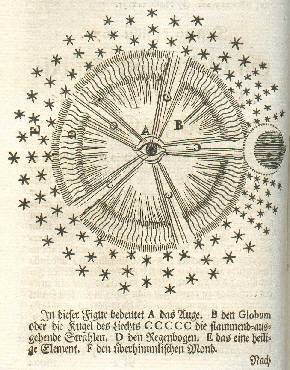
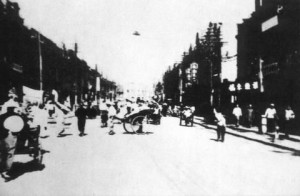
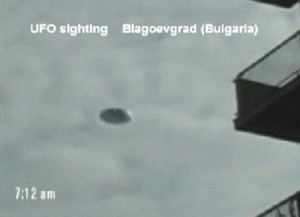
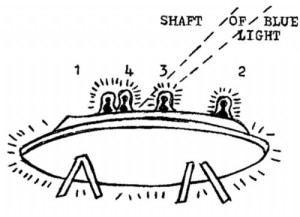
Related Reports
1 CE – 499 UFO & Alien Sightings
500 – 899: UFO & Alien Sightings
900 – 1099: UFO & Alien Sightings